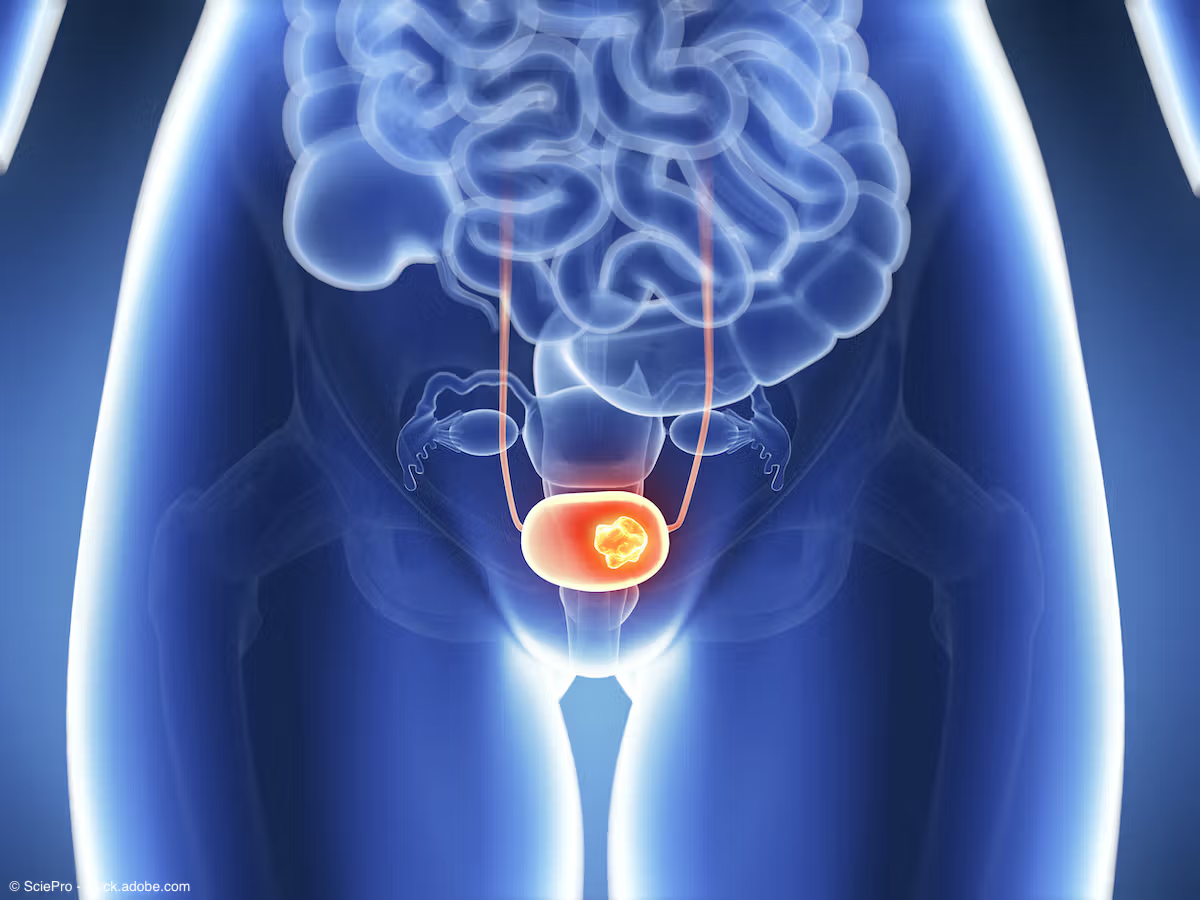Opinion
Video
Gary Steinberg, MD, shares initial phase 1 data on bel-sar in NMIBC
Author(s):
Key Takeaways
- The phase 1 study of bel-sar focuses on safety and initial efficacy in NMIBC patients, with promising results in low-grade and high-grade disease.
- Bel-sar demonstrated a complete clinical response in low-grade NMIBC patients and tumor shrinkage in high-grade cases, indicating potential efficacy.
- The trial design includes drug injection, light activation, and TURBT to assess safety, immune response, and histologic findings.
- The study's findings suggest bel-sar is well-tolerated, with immune cell infiltrate observed, indicating activation of the adaptive immune system.
“The preliminary findings were quite favorable in that we saw, especially in the low-grade population, complete elimination of tumor cells on the biopsies, on the transurethral resection of bladder tumors,” says Gary D. Steinberg, MD.
- Chapters
- descriptions off, selected
- captions settings, opens captions settings dialog
- captions off, selected
This is a modal window.
Beginning of dialog window. Escape will cancel and close the window.
End of dialog window.
This is a modal window. This modal can be closed by pressing the Escape key or activating the close button.
In this video, Gary D. Steinberg, MD, discusses the background and initial findings from an ongoing phase 1 study of bel-sar in patients with non–muscle-invasive bladder cancer (NMIBC).
Aura, the developer of the investigational drug, recently reported that 4 of 5 patients with low-grade disease who received bel-sar with light activation demonstrated a complete clinical response. Additionally, 2 of 3 patients with high-grade disease demonstrated visual tumor shrinkage on cystoscopy. Regarding safety, bel-sar appeared to be well-tolerated among trial participants.1
Steinberg is a professor of urology at Rush University Medical Center in Chicago, Illinois.
Video Transcript:
How was the study designed?
All too often when we do clinical trials, people want to see phase 3 results from phase 1 trials, but we have to remind ourselves that phase is a safety trial. What we do in pre-clinical work changes once we start putting it into humans. We have to make sure that what we're doing is safe. First and foremost, the initial part of the trial was just using the VDCs in the bladder to make sure that that was safe. Then the second phase was using the VDCs with the light activation.
Number 1, first and foremost, we have to look at the safety profile. Do patients tolerate this procedure well? The initial trial was to use a cystoscopic needle to inject the VDC, the drug, around the tumor. We're still working out how much drug to use. How many injections do you inject the tumor? Do you inject around the tumor? [Do you use] light activation? More importantly, how long do you wait? This trial was designed to show safety. Put the drug in, the next day, [use] light activation, and then 7 to 10 days later, perform a TURBT. They’re assessing immune-related adverse events; they're assessing for urinary symptoms, and so forth. Then looking at histologic findings from the TURBT, what do we see on the microscope? Do we see tumors still there? Do we see tumors gone? Do we see immune cell infiltrate, which is a key signal of turning on the adaptive immune system. Again, first and foremost is safety. But also, you do want to look at the efficacy, because the efficacy is going to give you a signal to inform you [if you] can go forward and potentially design a phase 2 and ultimately a phase 3 trial.
What were the key findings?
The patients that were treated were non–muscle-invasive, bladder cancer patients, most [of whom had] low-grade [disease], but some [had] high-grade. When we look at bladder cancer, 75% of all patients newly diagnosed with bladder cancer in the United States have non–muscle-invasive bladder cancer. There's an equal split between low-grade and high-grade, about 50% to 60% are low-grade, and the rest are high-grade. So, there's a huge prevalence of this disease in the US population. Quite frankly, it is a worldwide disease. We see large amounts of bladder cancer all over the world.
Initially, the majority of the patients were low-grade. We did have some high-grade patients that were treated. The preliminary findings were quite favorable in that we saw, especially in the low-grade population, complete elimination of tumor cells on the biopsies, on the transurethral resection of bladder tumors. We were [also] excited to see a fair amount of immune cell infiltrate, increased CD8+ T-cells, CD4+ T-cells. These are parts of the adaptive immune system. There also was some suggestion of some other immune cell infiltrates, again, which is very important to demonstrate. More importantly, we only waited 7 to 10 days after the treatment to see this. As we know, the immune system can take longer in different patients. Many times you might not see the immune system revved up for 3, 4, even 6 weeks, if not longer, after a treatment. So, this was a very important signal and finding that in humans, what we saw preclinical is happening in real-time in humans.
This transcription has been edited for clarity.
Reference
1. Multiple clinical complete responses demonstrated following single low dose administration of bel-sar in patients with non-muscle-invasive bladder cancer (NMIBC) in ongoing phase 1 trial. News release. Aura. October 17, 2024. Accessed October 24, 2024. https://ir.aurabiosciences.com/news-releases/news-release-details/multiple-clinical-complete-responses-demonstrated-following










2 Commerce Drive
Cranbury, NJ 08512
All rights reserved.







